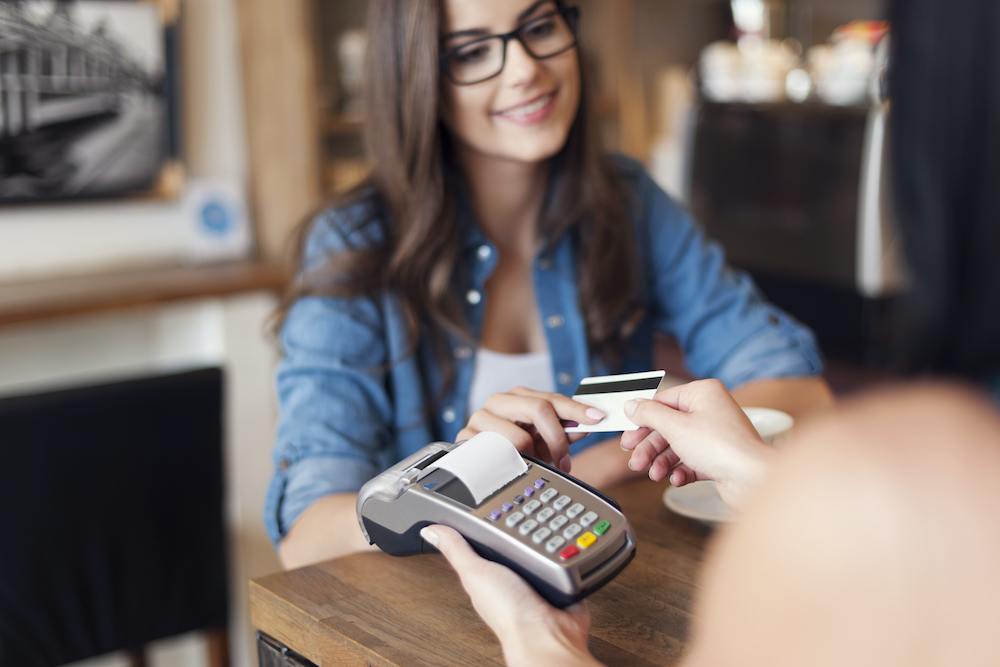I have been giving our kids allowance in cash for years. It helped them to learn about money and encouraged them to be both spenders and savers. In addition to the cash flow challenge of having the correct denominations for allowance day, cash is no longer a dominant way of using money. Kids need experience managing money electronically.
They each had an account at our bank. Some custodial savings thingy that they could not access without me. And, it was a savings account. All they could do was add to it, admire the balance as it grew and learn how interest was calculated. Cool and important skills. But my kids are also spenders and the account could not help them practice that.
Most banks do not offer a checking account for kids until age 16. Research has shown that kids are learning about money as early as age three and are forming their financial values and behaviors now. They should not have to wait until near adulthood to start practicing with the tools of financial management.
“When I had cash, I had cash” (14 year old)
Archaic Tool for Contemporary Skills. When kids are given cash, they just have cash. They can count it , save it and admire it. But until a parent transports them to a place to spend it, they just have cash. It is also a reminder of how reliant they are on the adults in their lives to spend the money when and where they desire. Additionally, cash cannot earn interest and grow in a wallet or a cash box.
“I have all of my money with me (with an ATM card) which is different and maybe not in a good way but I am trying to be more responsible and I think that it is a good lesson for me to learn now” (14 year old)
Responsibility. An ATM card provides access to all of the funds in the associated bank account. Increased access can inspire increased responsibility. Kids have to keep track of a physical plastic card at all times. They have to establish, memorize and protect a four digit pin number. And, they have to learn that even when they cannot see the money, it is being deducted from their available funds.
“Prepares me for when I am an adult and have a credit card and I’ll know how to use it instead of just jumping right in” (12 year old)
Confidence. Kids seem to appreciate that mistakes can be made with money. Kids with checking accounts and ATM cards get a chance to practice using these banking instruments now and build the confidence and skills they will need in adulthood.
“When I had cash I didn’t keep track” (14 year old)
Tracking. Adults rarely keep track of how they spend their cash. It follows that kids have no idea where their cash goes either. The monthly bank statement provides an ongoing opportunity to review income and expenses and consider changes. As an exercise, I asked my kids to identify and review each transaction on their statement. One child realized that she had diminished a year of savings gains to cover her spending. While she was shocked and disappointed with the results, she was also grateful for the data to inform future actions.
“I wouldn’t be able to get SIMS and stuff like that with paper money” (12 year old)
Spending. The products and services kids desire cannot be purchased with cash. Generation Z is the first “digitally-native” demographic cohort. A greater share of teen spend is moving online with accelerated growth in video games. According to a recent survey by Piper Jaffray, 50% of teens identify Amazon as their top shopping website. Instead of Mom and Dad offering up a credit card for these purchases, an ATM card provides access to online purchases.
“I think the fact that I can see how much money I have all the time makes me think about it more” (14 year old)
Engagement. Many financial institutions provide banking applications to serve as a financial dashboard. There is an enormous difference between looking at money in a cash box and on a banking application. On banking apps, kids can begin creating budgets, setting goals and analyzing spending and saving habits – all through a website or on their phone. Now that my kids can see their money on an application, they think more deeply about how much they have and where it all goes.


Recent Comments